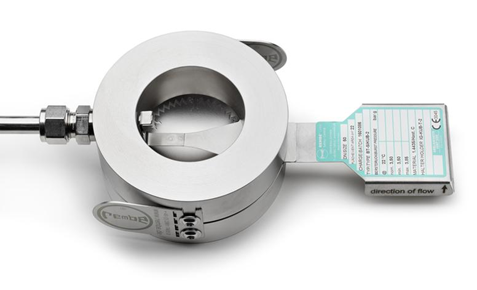Want to inspire greater confidence in your workers? Need local indications of combustible gas concentration levels to satisfy user and application requirements? The PrimaX® IR+ Gas Detector could be the answer you’re looking for.
When you’re the person responsible for safeguarding people and places in the oil, gas, and chemical process industries, you naturally want to stay abreast of innovation in gas detection.
Advances in gas detection
But rapid technological developments over recent years mean there are now a wide range of solutions. These range from conventional sensing methods like infrared detectors and catalytic bead sensors which have wide customer acceptance to newer technologies like ultrasonic detectors, open path infrared or laser-based detectors. Different technologies work in different ways – ultrasonic solutions ‘hear’ the ultrasonic sound from a compressed gas leak whereas other technologies ‘see’ a gas cloud using infrared absorption or ‘smell’ trace elements of a combustible gas.
Each of these solutions has its own strengths and weaknesses and are suited to particular applications and environments. For example, fixed point detectors like point infrared detectors can help protect high risk locations from combustible gas leaks, including enclosed areas. They can also help in locations with potentially low oxygen content like ventilation ducts. Meanwhile, open path solutions can detect gas leaks in wide open areas providing integrated measurement of gas cloud. Ultrasonic detectors are suitable for high pressure offshore and onshore gas facilities where gas clouds can easily disperse, for example because of high winds.
The benefits of a layered approach
Choosing the right detection solutions for your site depends on many factors including the type of risk you’re trying to address, the placement, size and shape of your equipment, and the topology of your site. A layered approach in which several different detection technologies work together may be the best way for you to enhance safety and protect both people and plant. Using a combination of solutions helps to mitigate the limitations of single technologies and the risk that a system using the same method of detection will fail to detect a gas release.
Your first line of defence – point detectors
Fixed point detectors, including Point Infrared detectors, are likely to be your first line of defence. Infrared (IR) gas detectors rely on the ability of a hydrocarbon gases to absorb infrared energy (they’re therefore not suitable for hydrogen). They use two wavelengths – a gas-absorbing ‘active’ wavelength and a ‘reference’ wavelength not absorbed by the gas. With resistance to contamination and poisoning a long sensor life can be achieved, and minimal validation requirements help provide combined low cost of ownership. These detectors are suitable for environments where there’s continuous combustible gas presence, including oxygen deficient environments. They are positioned near potential leak sources such as pipe joints, valves, compressors, pumps and tanks.
Meet our PrimaX® IR+ Gas Detector
At MSA Safety, we’re now introducing a new point infrared gas detection solution, the PrimaX® IR+ Gas Detector. It is an extension to our PrimaX IR family that combines the trusted performance of the PrimaX IR® sensor with a user-friendly display providing real-time local gas concentration readings.
Tried and tested sensor performance
The reliability of the PrimaX® IR sensor will already be familiar to many health and safety decision-makers. With more than 45,000 units sold around the world, it offers the tried and tested reliability that inspires confidence in both health and safety professionals and workers alike. Its patented dual-source design helps provide excellent reliability and seamless monitoring in the event of one source failure. And heated optimised optics provide stability and accuracy even in humid conditions.
Now, with the addition of an LED display providing local gas concentration levels, the PrimaX® IR+ Gas Detector offers even greater confidence, enhancing your safety systems further.
Real-time local gas concentration readings and remote notifications
The addition of an LED display offers instant situation awareness and a local indication of gas concentration levels so workers can see at a glance that they’re working in a safe environment. There are four LED status indicators to signal normal operation (green), a fault (yellow), a low alarm (red) or a high alarm (also red). Two onboard alarm relays for low and high gas alarms and an additional fault relay can trigger desired safety actions.
Easy installation and operation
Users of our PrimaX® IR detector will know how easy it is to set up, calibrate and troubleshoot. And the same is true of the PrimaX® IR+. The factory calibration means it’s ready to use straightaway. But if you do need to recalibrate for different gases, the HART® technology and intuitive calibration cap complete with icon-driven interface make this a straightforward process.
Remote sensor option for maximum flexibility
Other notable benefits of the PrimaX® IR+ include the remote sensor option, enabling the sensor to be mounted up to 30 metres from the display unit. This allows you to position the display unit in the optimum location for your needs. The durable aluminium and stainless-steel enclosures add to user confidence and mean both sensor and display unit can be installed in the most demanding of environments.
Why you might want local indications
Offshore platforms, gas compressor stations and onshore terminals are complex environments and, in putting together a layered safety system and keeping it up to date, you will want to know you’re choosing the right solutions to meet today’s rigorous safety standards and expectations.Additionally, some sites may require a local indication of gas concentration levels to support safety protocols and provide workers in combustible environments with added reassurance.
To find out more about our PrimaX IR+ Gas Detector https://gb.msasafety.com/Fixed-Gas-%26-Flame-Detection/Gas-Detectors/PrimaX%C2%AE-IR%2B-Gas-Detector/p/000070001800001244
Learn more about our Fire & Gas Detection Controllers https://gb.msasafety.com/detection-controllers














